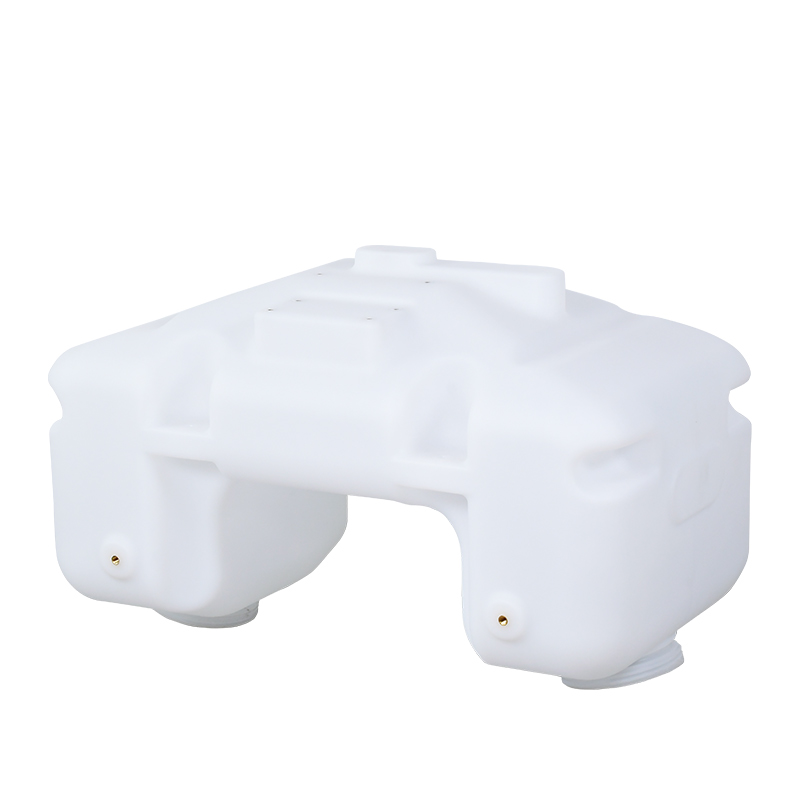What are the Advantages of Rotational Moulding in the Production of Medical Equipment
 Jun 14,2025
Jun 14,2025

What are the Advantages of Rotational Moulding in the Production of Medical Equipment?
In the medical equipment industry, the choice of manufacturing process directly impacts product quality, functionality, cost, and production efficiency. The rotational moulding process, as a versatile and innovative plastic shaping technology, has gained significant attention in medical equipment manufacturing in recent years. It offers significant advantages, making it an ideal choice for producing custom medical equipment enclosures.

Cost - Effective Manufacturing
1.Lower Tooling Costs
Compared to other plastic manufacturing techniques such as injection molding, the molds used in rotational moulding are much more cost - effective. Injection molds require high - precision machining and are often made of expensive materials to withstand the high pressures involved in the injection process. In contrast, rotational molds are relatively simple and less costly to produce. This is because rotational moulding is a low - pressure process, so the mold does not need to be as robust. For businesses looking to produce custom medical equipment shells, especially in smaller production runs, the lower tooling costs of rotational moulding can significantly reduce overall manufacturing expenses.
2. Material Efficiency
Rotational moulding is a highly material - efficient process. Since the polymer is evenly distributed within the mold, there is minimal material waste. Any excess material can often be easily recycled and reused in subsequent production runs. This not only reduces material costs but also makes rotational moulding an environmentally friendly choice. In the medical industry, where cost - control is essential without compromising on quality, the material efficiency of rotational moulding is a major advantage.
Design Flexibility for Custom Medical Device Shells
One of the most significant advantages of rotational moulding for medical equipment production is its design flexibility. Medical device designers often need to create complex shapes and geometries to meet the specific requirements of different medical applications. Rotational moulding allows for the production of parts with undercuts, multiple walls, and even molded - in hardware and graphics. For example, custom medical equipment shells can be designed to fit precisely around delicate internal components, providing a secure and protective enclosure. This flexibility also extends to the ability to create seamless, hollow designs, which are not only aesthetically pleasing but also have practical benefits in medical settings. Seamless designs are easier to clean and sterilize, a critical factor in maintaining a hygienic environment for patients.
Durability and Resistance
1.Impact and Weather Resistance
Medical equipment is often subjected to various environmental conditions and handling stresses. Rotomolded products, particularly those made from polyethylene (a commonly used material in rotational moulding), offer excellent impact and weather resistance. Polyethylene has a long lifespan and is impervious to many elements, making it ideal for medical equipment that may be used in different climates or rough handling situations. For example, medical cases and carts produced through rotational moulding can withstand accidental drops and knocks without cracking or deforming, ensuring the protection of the valuable medical devices inside.
2. Chemical Resistance
In medical facilities, equipment may come into contact with a variety of chemicals, including disinfectants and cleaning agents. Rotomolded parts made from appropriate materials can resist these chemicals without deteriorating. This chemical resistance is crucial for maintaining the integrity of medical equipment over time. For instance, medical waste containers produced by rotational moulding can safely store and transport potentially hazardous waste without the risk of leakage or degradation due to chemical exposure.
Compliance with Medical Standards
1. Food and Drug Administration (FDA) Requirements
Many medical equipment components need to meet strict FDA regulations. Rotational moulding can use specific grades of certified prime virgin materials that are compliant with FDA requirements for food - grade manufacturing, which is relevant for some medical applications such as equipment used in the preparation or storage of medical fluids. This ensures that the medical equipment produced through rotational moulding is safe for use in patient - care environments.
2. Ease of Cleaning and Sterilization
As mentioned earlier, the seamless design of rotomolded medical equipment makes it easy to clean and sterilize. In a medical setting, where preventing the spread of infections is of utmost importance, equipment that can be thoroughly cleaned and sterilized quickly and effectively is highly desirable. Rotomolded medical device shells can be easily sanitized using standard cleaning and sterilization methods, helping healthcare providers maintain a high level of hygiene.
Production flexibility
1. Suitability for small to medium production runs
The rotational moulding process is highly flexible and well-suited for small to medium production volumes. Businesses can quickly adjust production quantities based on market demand and order requirements without incurring high costs. This enables rapid response to market changes and customer needs, providing businesses with greater competitiveness in the medical equipment market.
2. Prototyping capability
The rotational moulding process allows for the production of prototypes at a relatively low cost. Businesses can use these prototypes to test and validate the design and functionality of medical equipment enclosures. This helps identify and address potential issues early in the development phase, reducing development risks and costs. It also accelerates product launch times and brings innovative medical equipment to the market faster.
Enhanced brand image
The rotational moulding process supports the incorporation of graphic designs, enabling businesses to embed their logos, labels, or important instructions directly into custom medical equipment enclosures. This serves as a valuable alternative to traditional stickers, which may not adhere well to plastics. Such custom branding not only enhances the visual appeal of the medical equipment but also strengthens brand identity and differentiation. This leaves a positive impression on customers and healthcare professionals, boosting brand recognition and reputation.
These are merely some of its core advantages in the realm of medical equipment production. The ongoing evolution and innovation of rotational moulding will persist in driving progress within the medical equipment manufacturing sector. This technology promises to deliver safer, more efficient, and higher - quality medical devices, ultimately serving healthcare professionals and patients alike.
Should you require a quote or wish to gain a deeper understanding of the benefits associated with rotational moulding, feel free to contact us.
 Tel: 0086-13632687993
Tel: 0086-13632687993  Email: roto@lightvenus.com
Email: roto@lightvenus.com

 Home
Home What Are the Common Applications of Rotomolded Products
What Are the Common Applications of Rotomolded Products  You May Also Like
You May Also Like



 Tel
Tel
 Email
Email
 Address
Address








